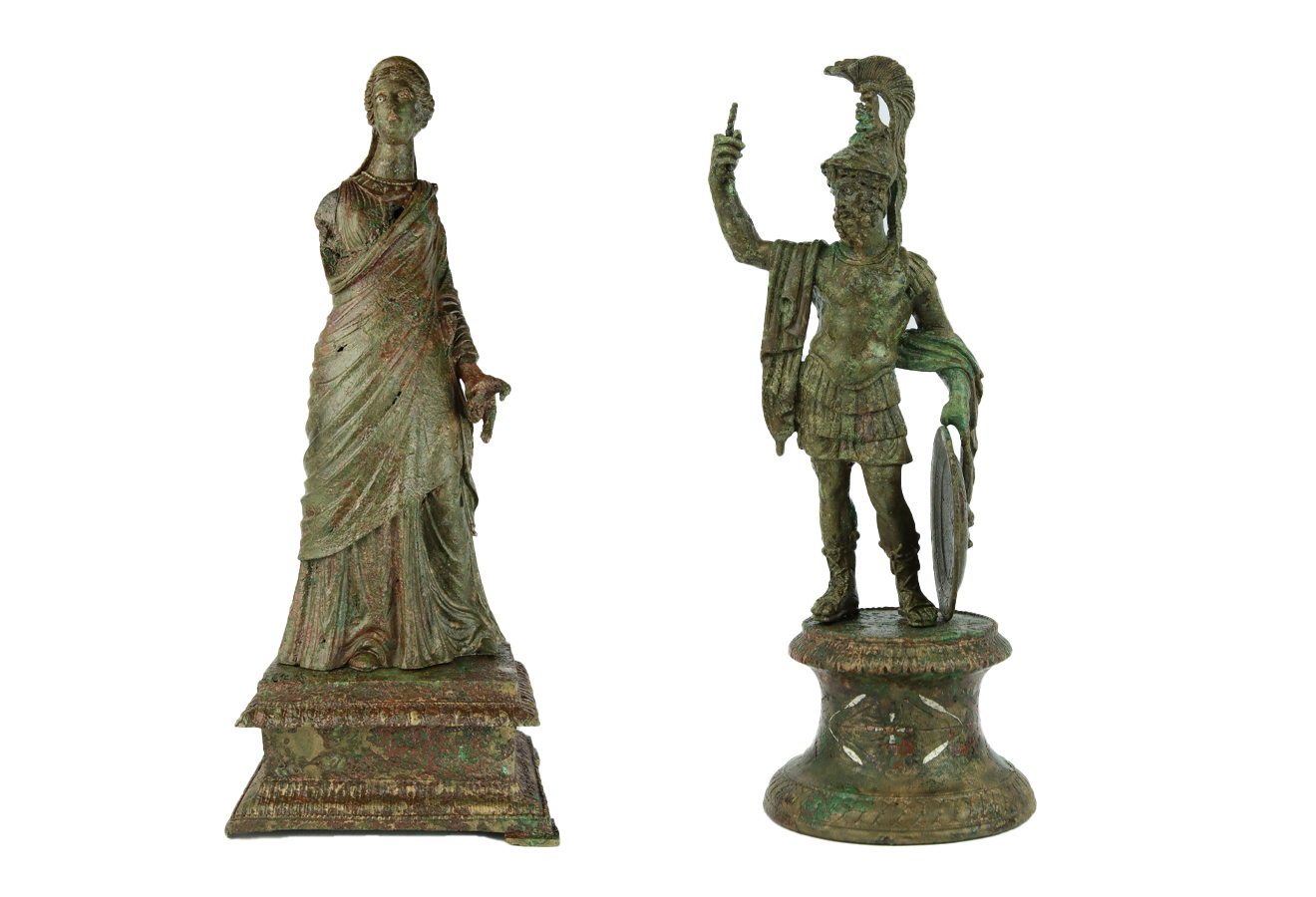Archaeologists from the National Institute of Preventative Archaeological Research (INRAP) have uncovered three opulent bronze statuettes during excavations of a Roman domus complex in Reimes, France.
During antiquity, Reims, then known as Durocortorum, was the second-largest city in Roman Gaul and the provincial capital of Gaul Belgica. At its peak, the city had a population estimated between 30,000 and 50,000 inhabitants, possibly reaching as high as 100,000.
Archaeologists excavating on the western edge of Durocortorum have unearthed a 2nd-century Gallo-Roman domus. The site is located more than a kilometre from the forum between the decumanus maximus and the main watercourse that crosses Reims.

The entrance to the domus is adorned with grand pillars and a frescoed wall depicting Achilles and Deidamia from Roman mythology. According to INRAP: “This scene preceding the Trojan War is prized in Rome and its presence in Reims testifies to its appropriation by the elites in the provincial capital of Gaul Belgica.”
Excavations also uncovered three bronze statuettes depicting Mars, a bull, and an unknown goddess. The statuette of Mars features an intricate armour design, including a Medusa on the cuirass and a relief of the she-wolf with Romulus and Remus.
The statuette of the goddess shows a female figure wielding Hercules’ club, a serpent, and the Nemean lion’s skin, adorned with a sphinx-engraved helmet.
“The quality of the statuettes and the rare richness of the decorative repertoire of the painted plasters of the house indicate wealthy owners with a strong attachment to Roman culture,” said INRAP.
Header Image Credit : Renaud Bernadet





